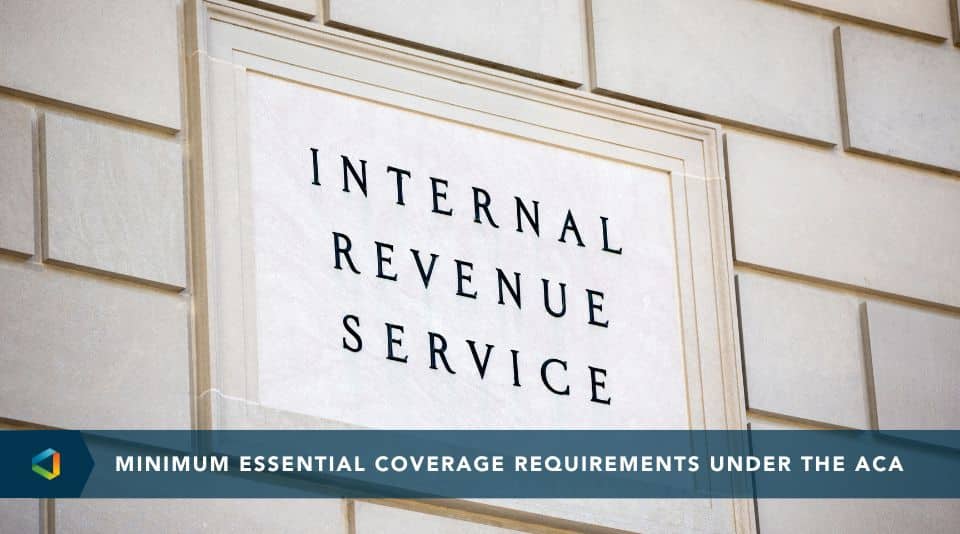Happy New Year, ACA! Changes On The Horizon
As Congress wrapped up for the year, they left Washington successfully using a budget reconciliation action to affect change. Although the original intent was exclusively for healthcare reform, this sweeping new tax bill impacts specific Affordable Care Act (ACA) provisions along with other benefits and employer-related items. Additionally, legislators and regulators continue to work on other bills and rules that may change the delivery and compliance of healthcare plan offerings.
Benefits-Related Tax Reform Changes
On December 22, 2017, President Trump signed the new tax reform bill, Tax Cuts and Jobs Act (P.L. 115-97), into law. There were differences in provisions between the House’s version of the bill and the Senate’s. Representatives from both chambers worked to reconcile the differences and bring a final version to the President for his signature.
The main Affordable Care Act change comes in the form of negating the individual mandate. In review, a budget reconciliation bill may only modify those items that affect the budget, e.g. revenue, expenses, or the debt limit.
Therefore, the individual mandate of the ACA still remains, but the new tax law reduces the amount of the penalty for those who go without health coverage to $0.
Here are some of the final components of the new tax law that will affect benefits and medical expenses:
| Benefits-Related Provisions | H.R.1 (115) – Tax Reform Law |
| ACA Individual Mandate | Reduces penalty for not carrying minimum essential coverage to $0, beginning January 2019 |
| Medical Expense Deduction | Deduction allowed for non-reimbursed qualified medical expenses exceeding 7.5% of adjusted gross income for tax years 2017 and 2018 (applies to taxpayers or spouses who are 65 or older for tax years 2012-2016) |
| Paid Family Leave | Creates a temporary tax credit for employers who provide paid family and medical leave to employees
|
| Transit and Parking |
|
Other Affordable Care Act Changes
Although the tax reform law does not repeal or suspend penalties for the employer mandate of the ACA, the IRS, in a separate regulatory action, announced a reporting delay
Applicable large employers (ALEs) who must provide employees with statements regarding their benefit plan offers for 2017 must now furnish those statements to affected employees by March 2, 2018, rather than January 31, 2018. Click here to learn more about the extended deadline.
The other areas of concern to employers are the two taxes that currently, or will have, the greatest impact on the cost of benefits. These are the health insurance tax (HIT) and the excise “Cadillac” tax. Neither was addressed in the tax reform law.
- HIT is the annual tax levied on all health insurers that insurance carriers pass through to employers and employees in their premium rates. There was a moratorium placed on this tax for 2017 but it returns in 2018. In anticipation, carriers have raised premiums in 2018 to account for the return of the tax. Many states allowed carriers to file dual rates–ones that anticipate the inclusion of the tax and ones that assume there is no tax. In this way, some carriers are prepared to react quickly should there be a new delay issued.
- The Cadillac tax assesses a fee on high-cost health insurance plans. It effectively caps the cost of plans by assessing a 40% tax penalty on plan costs that exceed a certain dollar amount. Although delayed in 2015, the new implementation date for this tax is 2020.
As active members of the National Association of Health Underwriters (NAHU) and the Council of Insurance Agents and Brokers (CIAB), we actively work on these issues with leaders of Congress and regulators. Both groups are part of the Alliance to Fight the Forty, a coalition of public and private organizations banding together to support employer-sponsored coverage.
Children’s Health Insurance Program Funding
One of the items we’ve been watching closely is the funding for the Children's Health Insurance Program (CHIP). Planned funding expired September 30, 2017, and the federal government has been assisting some states in meeting payment obligations for participants. Contained within the recently passed Continuing Resolution (CR), granting government funding through January 19, 2018, is authorization for CHIP funding. The new funding lasts through the end of March 2018. Employers are encouraged to continue to provide CHIP notices annually to their employees at the time of open enrollment or upon initial health plan enrollment.
Staying Alert Through 2018
Since the Continuing Resolution (CR) expires mid-January, there will be new talks beginning in an effort, once again, to avoid the next impending government shutdown. Efforts are being made to try to include a delay to both the HIT and Cadillac taxes in the next CR.
With the impending repeal of the individual mandate penalty, there is concern that the individual marketplace will continue to erode.
With no mandate in the Affordable Care Act to spur individuals to purchase coverage, it is likely that the healthiest individuals may forgo the high cost of health coverage by choosing to self-insure. The loss of these individuals will leave only those using the highest amount of services in the healthcare pool resulting in a continuing escalation of premium costs.
In response, many are saying there will be new legislative and regulatory activity to address this problem. The months following the September 2017 deadline to pass any sweeping healthcare reform, resulted in a flurry of legislative activity, including new bills introduced, members of Congress signing on and supporting existing bills, and renewed interest in the Alexander–Murray market stability bill. We will continue to work on your behalf with lawmakers and regulators to bring about the changes needed to support employers and individuals.
For 2018, we will be offering a new opportunity to receive up-to-date information on the changing landscape. In addition to our monthly blog articles, compliance webinars and newsletters, we are adding a new Quarterly Legislative and Regulatory Update webinar.
Please join us on January 24, 2018, for the first in this series. Click here to register. |
We look forward to working with you on the next part of the healthcare journey and if you have any questions do not hesitate to reach out to your OneDigital representative. Here’s to an exciting and productive 2018.




